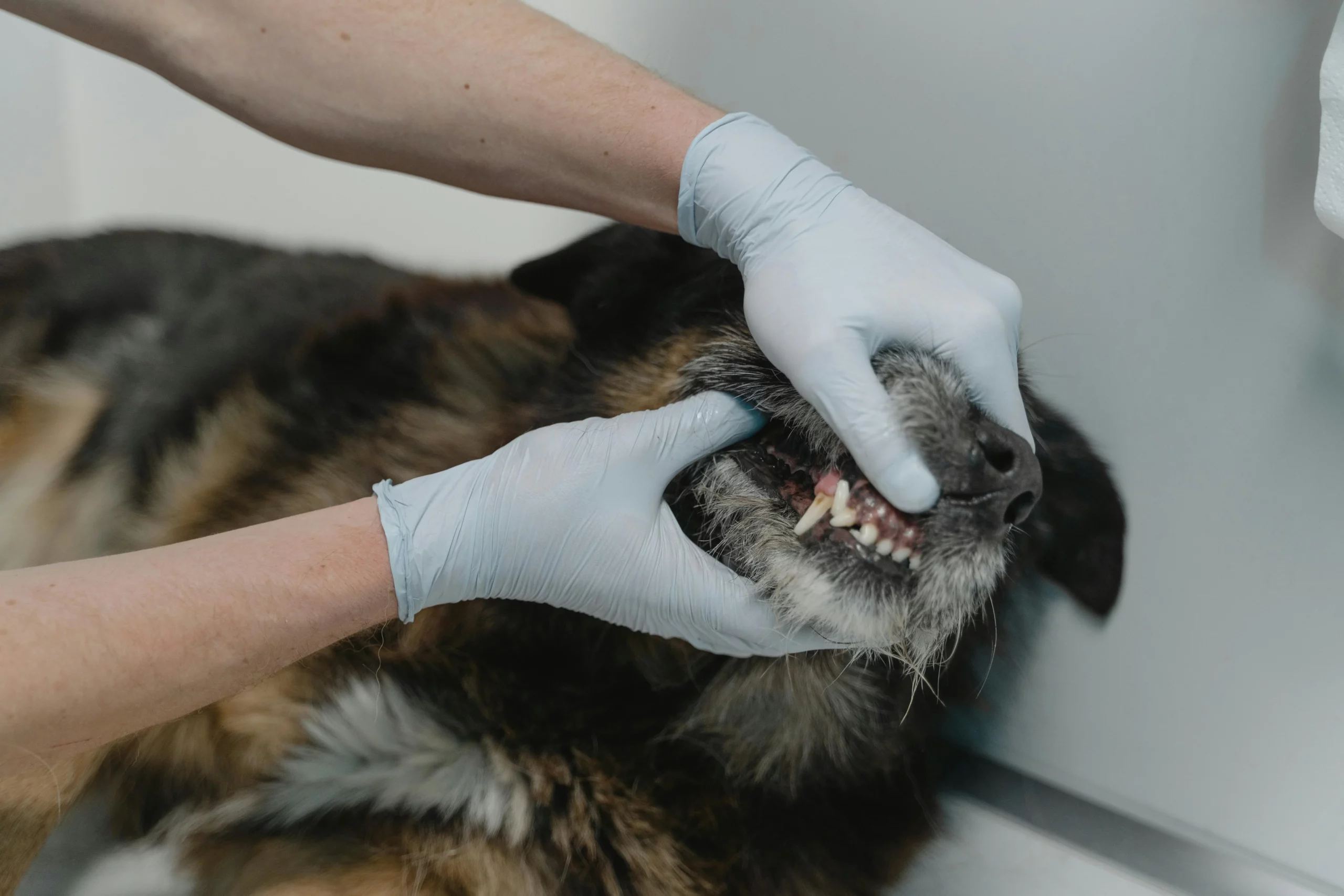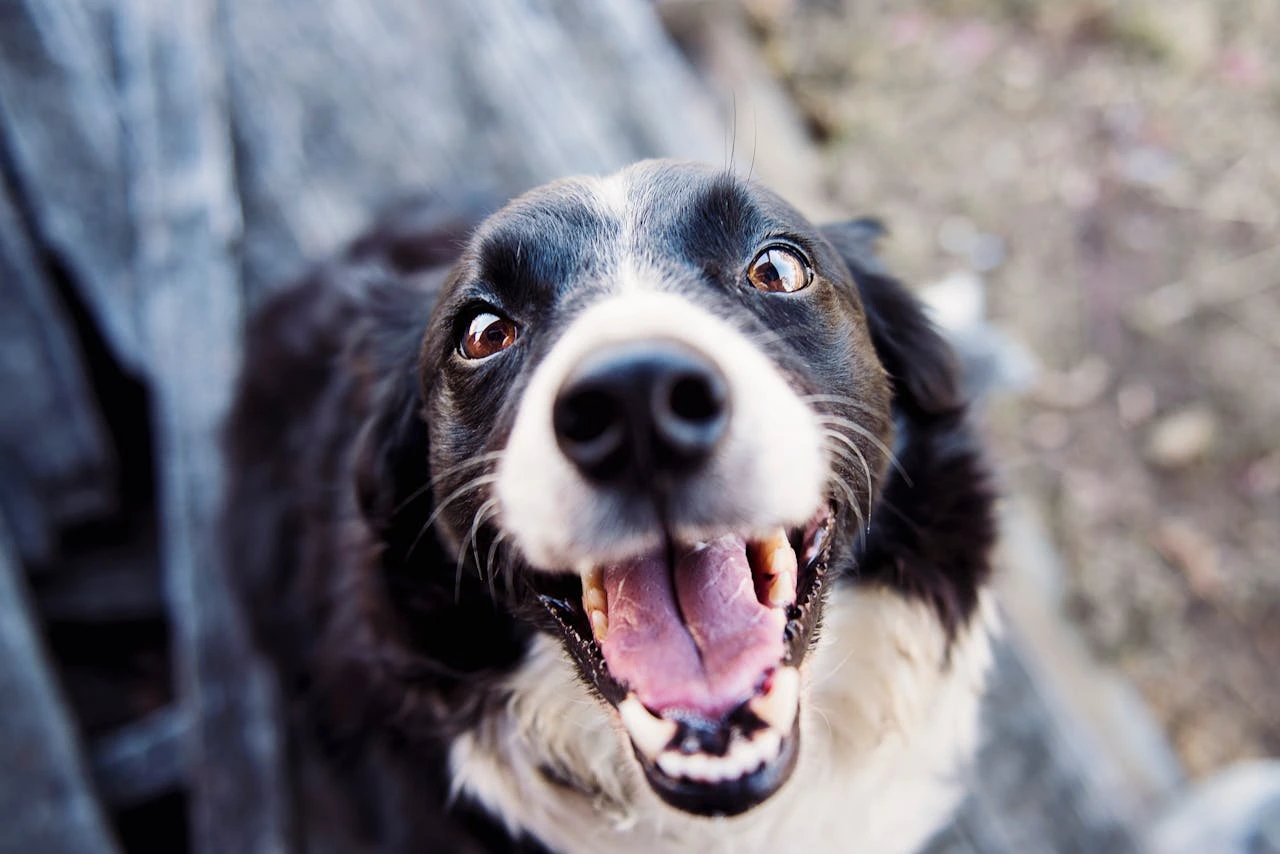Pet Dental health is one of the most important and often overlooked parts of caring for our pets. Just like us, dogs and cats need regular check-ups and professional cleans to help keep their teeth and gums in good shape.
What many people don’t realise is that only about a third of the tooth is actually visible above the gum line. The rest is hidden beneath the surface, and that’s often where the more serious problems start.
In this guide, we’ll break down what dental disease looks like in pets, the different stages to be aware of, and the best ways to stay ahead of it.
What Is Dental Disease in Pets?
Dental disease, also known as periodontal disease, is a progressive condition that affects your pet’s teeth and gums. It’s caused by plaque and tartar buildup, which leads to inflammation, infection, and damage to the teeth and surrounding structures.
Left untreated, it can cause pain, tooth loss, difficulty eating, and even damage to internal organs such as the heart, liver, and kidneys.
Understanding the Stages of Dental Disease
Dental disease in dogs and cats is graded from Grade 1 to Grade 4, depending on the severity. Each stage requires different levels of treatment.
Grade 1 – Gingivitis
- Early stage of dental disease
- Gums (gingiva) are slightly red, swollen, and inflamed
- Plaque is visible on the teeth
- This stage is reversible with a professional dental clean and a home dental care routine
Treatment includes hand scaling, fluoride treatment, and daily brushing to help return the gums to a healthy state.
Grade 2 – Tartar Buildup
- Gums are more inflamed and swollen
- Mouth may be painful, but pets often don’t show clear signs
- Foul breath becomes noticeable
- Plaque hardens into tartar, and cavities may begin to form, especially in cats
Dental Treatment requires a full dental clean, possible antibiotics, and pain relief. Without treatment, this can progress to irreversible damage.
At Centenary Vets, we provide comprehensive dental services designed to treat these early stages and prevent further complications.
Grade 3 – Early Periodontal Disease
- Gums are cherry red and may bleed
- Infection begins to destroy gum tissue
- Teeth may become loose or painful
- Bad breath worsens, and your pet may show signs like reduced appetite or pawing at the mouth
Treatment may include extractions. Pain management and infection control are essential.
Grade 4 – Advanced Periodontal Disease
- Severe infection spreads below the gum line
- Bone loss occurs, risking fractures of the jaw
- Bacteria enter the bloodstream, threatening heart, kidney, and liver health
- Abscesses and painful cavities are common
Treatment involves pre-dental blood testing, antibiotics, and possibly surgery or extractions. Immediate veterinary attention is required.
What You Should Know About Dental Procedures
Dental procedures in pets are performed under general anesthesia. This allows the veterinary team to perform a thorough cleaning, take X-rays, and extract damaged teeth painlessly and safely. At Centenary Vets, we prioritise your pet’s safety by performing pre-anesthetic blood tests and closely monitoring vital signs throughout the procedure.
Are Some Pets More at Risk?
Yes. Certain breeds are more prone to dental problems:
- Small dog breeds (like Chihuahuas and Yorkshire Terriers) often develop severe tartar and periodontal disease at an earlier age
- Brachycephalic breeds (like Bulldogs and Pugs) have crowded teeth that trap food and bacteria
- Older cats and dogs are at increased risk due to natural wear and immune changes
Understanding your pet’s risk factors helps us create a personalised dental care plan.
Signs of Dental Disease in Dogs and Cats
Knowing what to look out for can make all the difference. Common signs include:
- Bad breath
- Red or inflamed gums
- Pawing at the mouth
- Difficulty eating or chewing on one side
- Discoloured teeth
- Swelling under the eyes
If you notice any of these symptoms, book a dental check-up right away.
What You Can Do at Home
Preventing dental disease in pets starts at home. Here are some simple ways to help:
Brush Their Teeth
Use pet-safe toothpaste and start slowly. We can show you how.
Dental Diets and Treats
Ask us about vet-approved food and treats designed to reduce plaque.
Chew Toys
These help mechanically remove tartar while keeping your pet entertained.
Regular Vet Check-ups
Nothing beats a professional clean and oral exam. We can detect problems early and take X-rays to see what’s happening beneath the gum line.
Common Myths or Misconceptions About Pet Dental Care
- Myth: Pets don’t need their teeth brushed.
Many pet owners believe dental care is unnecessary. In reality, regular brushing helps prevent plaque buildup and disease. - Myth: Bad breath is normal for pets.
While some animals may have a natural scent, persistent bad breath is a warning sign of dental disease or other health issues. - Myth: Only older pets get dental problems.
Dental disease can affect pets of any age, even young animals, especially certain breeds. - Myth: Dental treats or toys replace brushing.
While helpful, treats and toys cannot fully replace the benefits of regular tooth brushing.
Frequently Asked Questions About Pet Dental Disease
Q: How often should my pet get a dental check-up?
A: Every 6 to 12 months is ideal, depending on your pet’s risk factors and current dental health.
Q: Is bad breath always a sign of dental disease?
A: Often, yes. But sometimes it can indicate other health issues, so it’s best to have your vet check your pet.
Q: Can I brush my pet’s teeth at home?
A: Yes, and it’s highly recommended. We can show you the best techniques and products to use.
Q: Why is anesthesia necessary for dental treatment?
A: Anesthesia lets us clean and examine every tooth safely and painlessly, including X-rays and extractions if needed.
How Can Centenary Vets Help?
If you want to know more about how to keep your pet’s teeth healthy or if you’re concerned about dental disease, don’t hesitate to contact Centenary Vets today. Our friendly team can provide advice, dental services, and support to keep your furry friend smiling.



